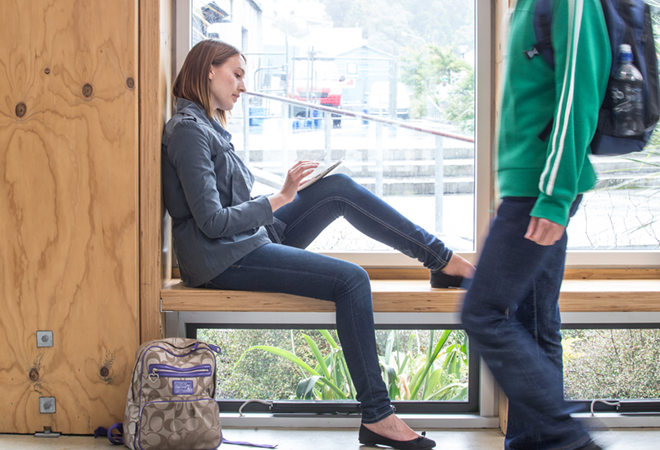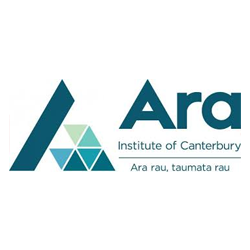
Situated-Technology-Enhanced Learning Through Development of Interactive eTextbooks on Net Tablets
Status
Completed: 28 February 2012
Project Details
A project completed in 2012, undertaken by Christchurch Polytechnic Institute of Technology, to study the combination, inter-relationships and synergies of four pedagogical approaches to improve student engagement with learning – mobile learning; constructivist learning and connectivism; situated learning; and multimodal and multi-literate user interactivity.
Aims:
The main aims of the project were to:
- enable students and staff to utilise technology for learning
- develop ‘situated-technology-enhanced learning’ using the capabilities provided by net tablets
- encourage and enable students to create their own etextbooks or eworkbooks.
Methodology:
The project used a participative action research methodology involving:
- student participation in ‘critical incident’ focus groups and questionnaires as interactive etextbooks and eworkbooks were introduced, personalised and utilised
- tutors maintaining an on-going electronic journal, detailing the planning, deployment, construction of etextbooks and use through teaching sessions
- classroom and workshop observations to evaluate the efficacy of the cooperative learning environment afforded by the ability to upload content on to net tablets by both tutors and students.
Team

Selena Chan
Project Leader
Christchurch Polytechnic Institute of Technology (now Ara Institute of Canterbury)
Katrina Fisher
Christchurch Polytechnic Institute of Technology (now Ara Institute of Canterbury)
Peter Sauer
Christchurch Polytechnic Institute of Technology (now Ara Institute of Canterbury)Status
Funding
$10,000.00 (excl GST)
Key Findings
The key findings from the project included:
- Net tablets were used to provide opportunities for students to become constructive learners. To ensure success, tutors’ technology capability, both individually and within the teaching sections involved in this project, required external support and tutors’ enthusiasm and diligence.
- The advantages of situated-technology-enhanced learning in vocational learning settings can be used to engage and enhance learning and contribute to improvement in students’ and tutors’ digital literacy skills.
- The findings from this project show an increase in student engagement brought about by a careful match of learning outcomes to the use of situated-technology-enhanced learning.
- The four pedagogical approaches of mobile learning, constructivists learning, situated learning and encouragement of multimodal and multiliteracy modes to showcase students’ work, were made possible through the capabilities of net tablets.
- The introduction of using net tablets in the ways described in the project, also led to tutors’ increased understanding of teaching and learning processes.
- The two teaching sections (barista and automotive engineering) involved in this project, reaped benefits from the ongoing teaching methodology discussions and opportunities to trial and familiarise themselves with the net tablet’s educational potential.
Key Recommendations
The key recommendations from the project are the following guidelines to assist vocational educators to implement situated-technology-enhanced learning into their programmes/courses:
Preparing tutors | Underpin learning activities with sound pedagogical frameworks; set aside sufficient time for tutors to familiarise themselves with the technology; encourage tutors to ‘learn by doing’; and prepare ‘how to' guides as a precursor to using the activities with students.
Preparing students | Support students to develop appropriate digital literacy skills for using apps specifically for learning; explain to students the reasons for using technology in learning activities; and encourage students to contribute to improvement in how net tablets are used for meeting learning outcomes.
Selecting appropriate learning activities | Match learning activity to learning outcome and pilot activities with other tutors before using in class with students.
Setting up learning activities | Provide tutor support and student-accessible support for each learning activity; encourage students to experiment and feedback on aspects they found difficult to follow; make the activity fun; encourage peer learning; identify students who are reluctant to engage and offer assistance; and trial the ‘how to’ guides with other tutors or student volunteers.
Using net tablets for learning activities | Integrate technology into learning activities seamlessly; brief students on the role of technology in the activity; ensure activities provide extrinsic rewards for students in the form of a ‘product’; and remember, the use of technology is to enhance learning.
Be prepared to be flexible | Acquire sufficient capability to use net tablet so as to be flexible, if required, to change learning activities; listen and act on student feedback; and provide students with opportunities to learn additional digital skills.
Structured and supported processes | It is important to ensure there are structured and supported processes for introducing students and tutors to learning activities which are matched to appropriate technology tools and delivery. The approaches detailed in the report, ensure vocational students not only meet programme and qualification outcomes, but gain important digital literacy skills and become constructive learners.
A research report prepared by Selena Chan, Katrina Fisher and Peter Sauer.
(PDF,2.27 MB, 51-pages).
- 28 February 2012